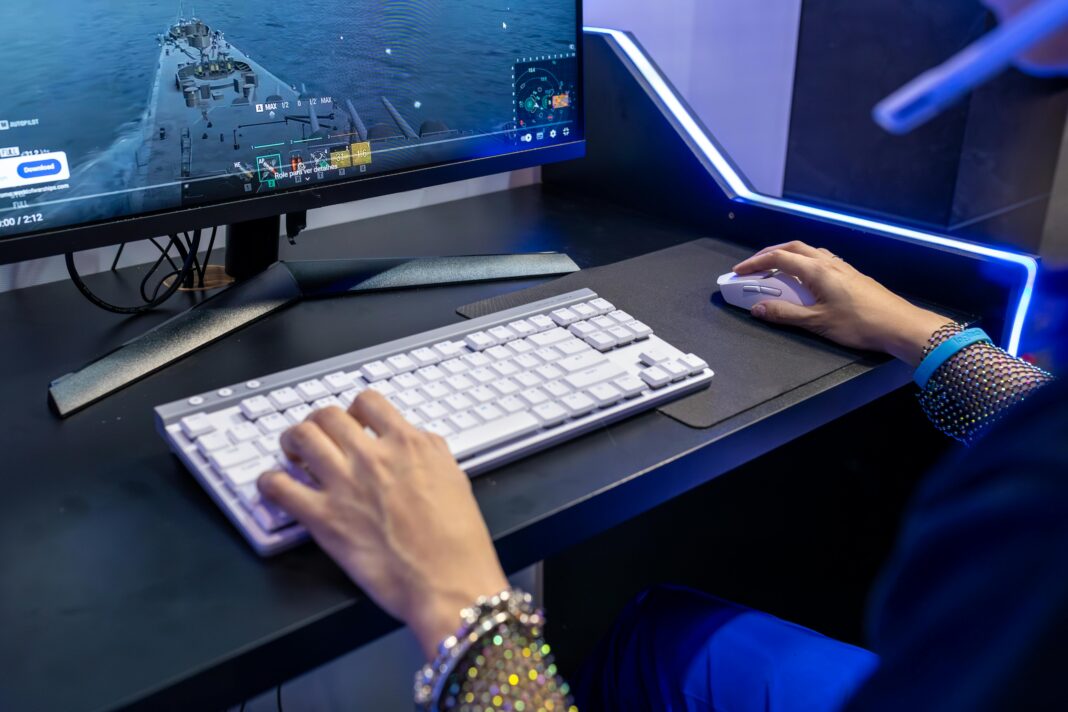The gaming industry has undergone numerous transformations over the years, from pixelated 2D sprites to photorealistic 3D worlds. However, one of the most groundbreaking advancements on the horizon is holographic technology—a innovation that could fundamentally alter how we perceive and interact with games. Unlike traditional displays or even virtual reality (VR), holograms project three-dimensional images into physical space, allowing players to engage with digital content in ways that were previously confined to science fiction.

This article will provide an exhaustive exploration of holographic technology in gaming, covering its underlying mechanisms, current applications, potential industry impacts, technical challenges, and future possibilities. Each section is designed to offer in-depth analysis, supported by real-world examples and expert insights. By the end, you’ll have a comprehensive understanding of why holographic gaming isn’t just a novelty—it’s the next evolutionary step in interactive entertainment.
Understanding Holographic Technology: The Science Behind the Magic
What Are Holograms?
Holograms are three-dimensional images created through the interference of light beams. Unlike conventional displays, which are flat and limited to two dimensions, holograms produce visuals with depth, parallax, and spatial presence. This means that viewers can walk around a holographic object and see it from different angles, just as they would with a physical object.
How Holographic Displays Work
Holographic technology relies on several key principles:
- Light Field Projection – Instead of emitting light from a single source (like a TV screen), holographic displays project light at multiple angles. This creates the illusion of depth without requiring special glasses.
- Wavefront Reconstruction – By recording and reconstructing the light waves scattered from an object, holograms replicate the way light naturally interacts with physical surfaces.
- Spatial Light Modulators (SLMs) – These devices manipulate light waves to generate dynamic holographic images in real time.
Types of Holographic Displays in Gaming
- Volumetric Displays – These create 3D images within a defined space (e.g., a glass cube). Examples include the Voxon VX1, which renders floating voxels (3D pixels) for interactive gaming.
- Light Field Displays – These use arrays of micro-lenses to project holograms viewable from multiple angles. The Looking Glass Factory’s displays are pioneering this approach for gaming.
- Laser Plasma Holograms – Emerging tech uses laser-induced plasma to generate mid-air holograms, though this is still in experimental stages.
Current Hardware Enabling Holographic Gaming
- Microsoft HoloLens 2 – While marketed as augmented reality (AR), its holographic capabilities allow for mixed-reality gaming experiences.
- Magic Leap 2 – Another AR/HR (holographic reality) headset with potential for immersive gaming applications.
- Looking Glass Portrait/Pro – Desktop holographic displays that support Unity and Unreal Engine for game development.
The Current State of Holographic Gaming
Existing Holographic Gaming Prototypes
Several companies and research labs have already demonstrated holographic gaming in action:
- HoloLens Minecraft Integration – Players can summon Minecraft structures onto real-world surfaces and interact with them using gestures.
- RED Player by Looking Glass Factory – A holographic gaming system that renders 3D game assets in mid-air without requiring headsets.
- Disney Research’s ARIA Project – A holographic character interaction system where digital beings respond to real-world gestures and speech.
Challenges Facing Adoption
Despite its promise, holographic gaming faces significant hurdles:
- High Costs – Current holographic displays and compatible hardware are prohibitively expensive for mainstream consumers.
- Limited Field of View – Many systems restrict holograms to small areas, reducing immersion.
- Processing Power Demands – Rendering real-time holograms requires immense computational resources.
- Content Scarcity – Few games are designed specifically for holographic interfaces, creating a chicken-and-egg problem.
How Holographic Technology Could Reshape Gaming
1. Revolutionizing Player Immersion
Traditional gaming relies on screens, which inherently limit depth perception. Holograms eliminate this barrier by allowing players to:
- Physically walk around virtual objects.
- Peer behind structures to uncover hidden elements.
- Manipulate digital items with natural hand gestures.
Potential Applications:
- Horror Games – Imagine a holographic entity emerging from your floor, reacting to your movements in real time.
- Puzzle Games – Players could rotate and examine 3D holograms to solve intricate challenges.
- Racing Sims – A life-sized holographic cockpit could appear in your living room, complete with interactive controls.
2. Transforming Social and Multiplayer Experiences
Local multiplayer gaming has declined due to the rise of online play, but holography could revive it:
- Shared Holographic Spaces – Multiple players could gather around a single projected game board, each seeing their own perspective.
- Augmented Reality Tabletop Gaming – Games like Dungeons & Dragons could feature holographic miniatures and dynamic environments.
- Live Holographic Avatars – Friends could project themselves into your space as digital avatars for cooperative play.
3. New Frontiers in Game Design
Developers will need to rethink traditional mechanics to accommodate holographic interfaces:
- Spatial Combat Systems – Fighting games could require players to physically dodge and counter holographic opponents.
- Environmental Interaction – Players might rearrange holographic terrain to alter gameplay dynamics.
- Hybrid Physical-Digital Games – Board games could merge with digital elements, such as holographic dice or animated cards.
4. The Future of Esports and Spectatorship
Holographic technology could revolutionize how audiences experience competitive gaming:
- 3D Holographic Arenas – Tournaments could project matches in mid-air, allowing spectators to view battles from any angle.
- Interactive Commentary – Analysts could manipulate holographic replays to highlight strategies in real time.
- Player Holograms – Esports stars could appear as life-sized holograms during live events, enhancing fan engagement.
Technical and Consumer Challenges
1. Hardware Limitations
- Resolution and Brightness – Current holograms often appear faint or pixelated under bright lighting.
- Latency Issues – Delays in motion tracking can break immersion.
- Power Consumption – High-fidelity holograms demand significant energy, limiting portable use.
2. Accessibility and Cost Barriers
- Pricing – Most holographic systems cost thousands of dollars, far beyond the average gamer’s budget.
- Space Requirements – Users need ample room for holograms to display properly.
- Learning Curve – New input methods (e.g., gesture controls) may frustrate traditional gamers.
3. Health and Safety Concerns
- Eye Strain – Prolonged exposure to holographic light fields may cause discomfort.
- Motion Sickness – Some users report dizziness when interacting with floating 3D images.
- Physical Fatigue – Gesture-based gameplay could lead to muscle strain over time.
The Future of Holographic Gaming: Predictions and Possibilities
1. Mixed Reality Integration
Future systems may blend holography with VR and AR, allowing seamless transitions between fully digital and real-world-enhanced experiences.
2. AI-Driven Holographic NPCs
Advanced artificial intelligence could enable holographic characters to:
- Recognize players’ facial expressions and emotions.
- Adapt dialogue and behavior dynamically.
- Learn from interactions to create personalized storylines.
3. Cloud-Based Holographic Gaming
Streaming services could render holograms remotely, reducing the need for expensive local hardware.
4. Holographic Game Development Tools
Designers might use holographic interfaces to sculpt 3D assets in real space, accelerating creative workflows.
FAQ: Answering Common Questions About Holographic Gaming
1. Will holographic gaming replace VR and traditional screens?
No—it will likely coexist with them. VR offers full immersion, while holography enhances real-world interaction. Each has unique strengths.
2. How soon will holographic gaming become mainstream?
Experts estimate 5–10 years before affordability and technology reach mass-market viability.
3. Can holograms be touched or felt?
Not yet, but haptic feedback gloves and ultrasonic force fields are in development to simulate tactile sensations.
4. Are there any holographic games available now?
A few experimental titles exist (e.g., HoloGrid: Monster Battle), but widespread adoption awaits better hardware.
Conclusion: The Dawn of a New Gaming Era
Holographic technology represents one of the most exciting frontiers in gaming, promising to merge digital and physical interaction in ways previously unimaginable. While challenges like cost, hardware limitations, and content scarcity remain, rapid advancements suggest a future where holographic gaming is not just possible—but commonplace.
As developers, engineers, and gamers push the boundaries of what’s achievable, we stand on the brink of a revolution that could redefine entertainment itself. The question isn’t if holographic gaming will take off—it’s when.
Are you ready for the next dimension of play?

